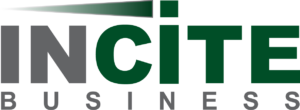Power Of The Group
I have been a member of a peer group for over seven years and I can say that making the decision to join was one of the best decisions I have ever made. The benefits I have received from the groups I have belonged to have been instrumental in my personal growth and success. I know this sounds like it may be an overly dramatic statement, but I firmly believe that I would not be where I am today without these experiences and my groups pushing me.
Peer groups or mastermind groups, as they are also called, have been around for a long time. I’m going to describe my group, but it is important to understand there are many different variations that are equally successful. I would define our group as being medium in size with eight members. You can go a little smaller, but if you get too small (4-5 members) you may have issues with having enough members show up to have a quality meeting. You can count on having 1-2 people having a conflict and not being able to attend. I believe you need at least 4 members in attendance to have a quality meeting. There are some groups that are much larger (16-18 members), which can work effectively, but you need to weigh size of the group against the amount of time you are meeting and what you are trying to accomplish. If you have too many members, some may not have time to participate and that is one of the critical parts of the group – everyone participates. We meet monthly for three hours, which is just about the perfect frequency and amount of time for our size.
Our monthly meetings are broken up into three sections:
- Social – we take a little time to have open discussions about current events or other general topics
- Updates – each member gives a very brief update on how things are going in their business and personal lives
- Process Issues – members can bring up a pressing issue that they need help with
You may have perked up when you saw that we talk about our personal lives. We absolutely do this. We recognized early that our business and personal lives are intertwined and one affects the other. I should mention that we each signed a non-disclosure agreement and what is said in the group, stays in the group. While there is a great amount of trust built up over time, this agreement helps new members in the group feel comfortable sharing information. My favorite part of our meetings is when we process issues. This is where you see the power of a peer group happening. The member gives you an overview of their situation, what the issue is, and what they are looking for in a solution. The rest of the group gets to ask clarifying questions to make sure they fully understand the situation. Then, each of the members give a possible solution to resolve the issue or at least move it in the right direction. Think about this for a second. If you had the opportunity to present one of your most difficult challenges to a group and get multiple solutions to consider, how would that improve your chances to succeed? When you see it in action it is incredibly powerful.
There are other important aspects of our group that I think are critical to its success. I mentioned earlier that everyone participates. Whether you have an issue to present or you are giving solutions to a member’s issue, each member is expected to be completely engaged. It is not uncommon to walk out of a 3-hour meeting feeling exhilarated and drained at the same time. We challenge each other. We create an atmosphere of trust, which allows us to confront each other when we think a member may be taking “the easy way out”. We hold each other accountable. If you bring up an issue and you receive multiple solutions or action steps from the other members, we are going to expect that you do something and we are going to ask you about it at the next meeting. If you know you are going to have to report on your progress, the chances of something happening are much higher.
As you can tell, peer groups are something I am very passionate about. I would not trade the bonds and relationships I have created with my group’s members. I firmly believe that by being involved in a well-constructed peer group you will greatly enhance your level of success. And if you are stuck in your current situation, a peer group is one of the best ways to get movement. If you want to hear more about my experiences with peer groups or would like to create or join an existing group, please contact me. I am here to help you.
“The whole is greater than the sum of its parts.” Aristotle
